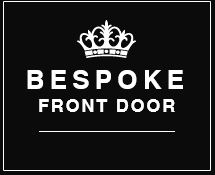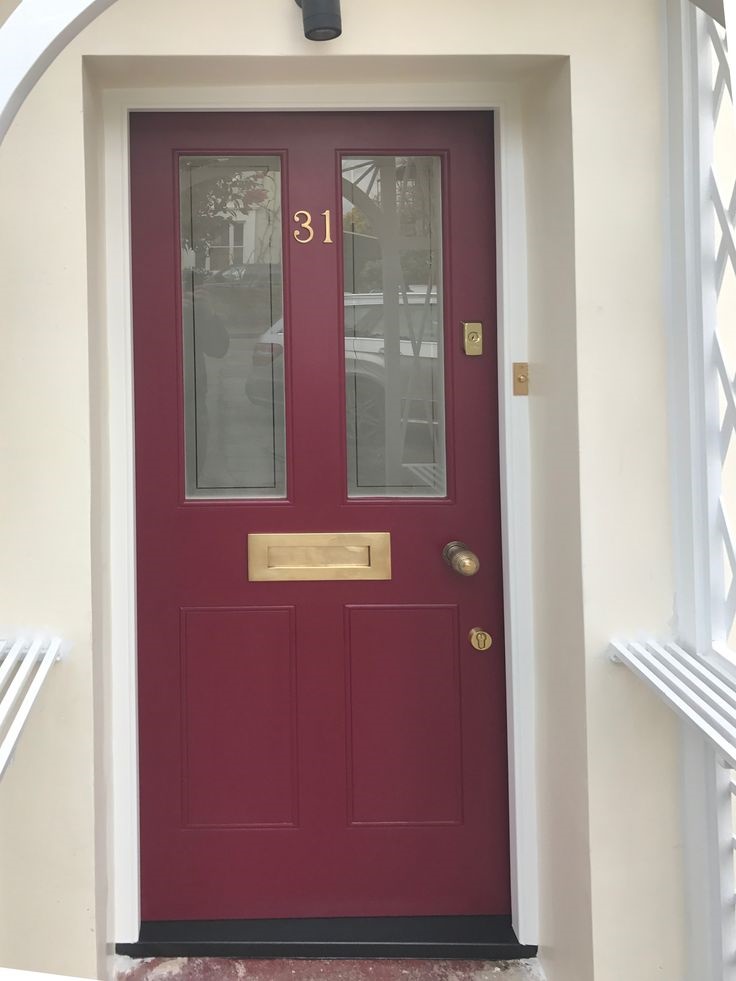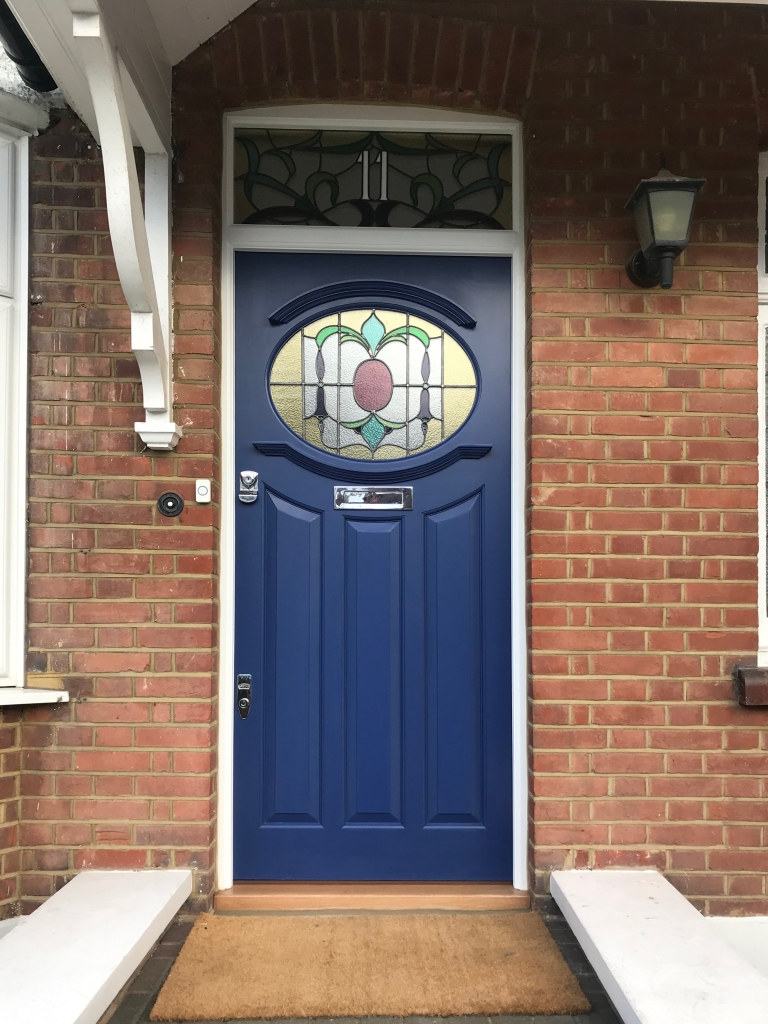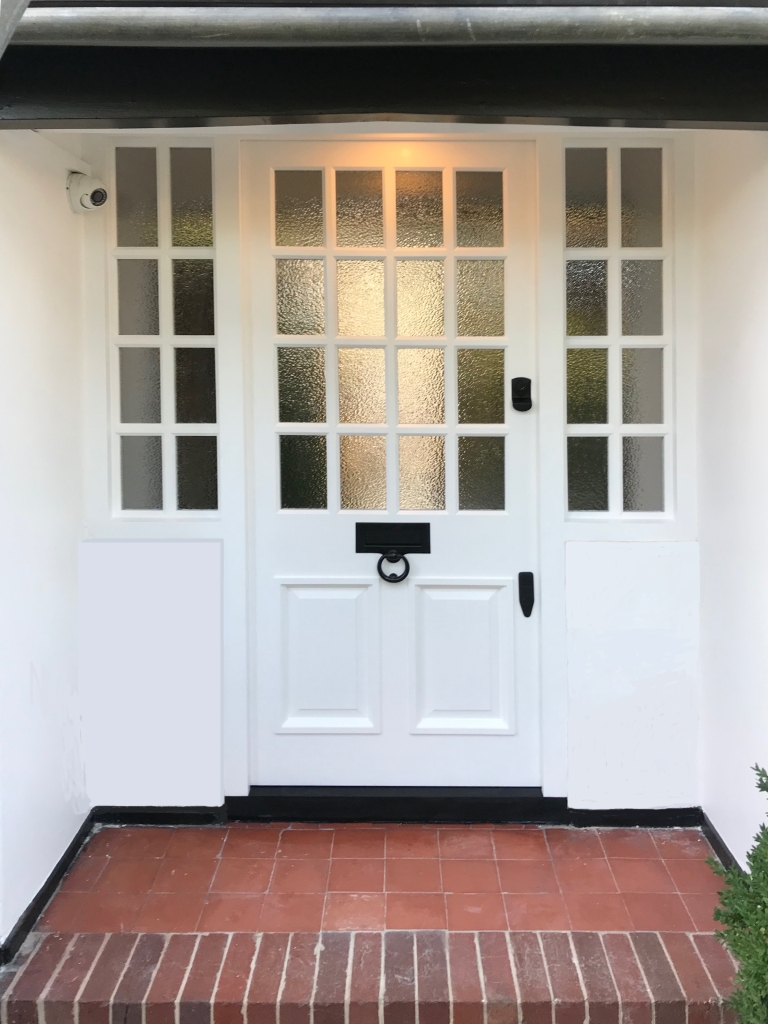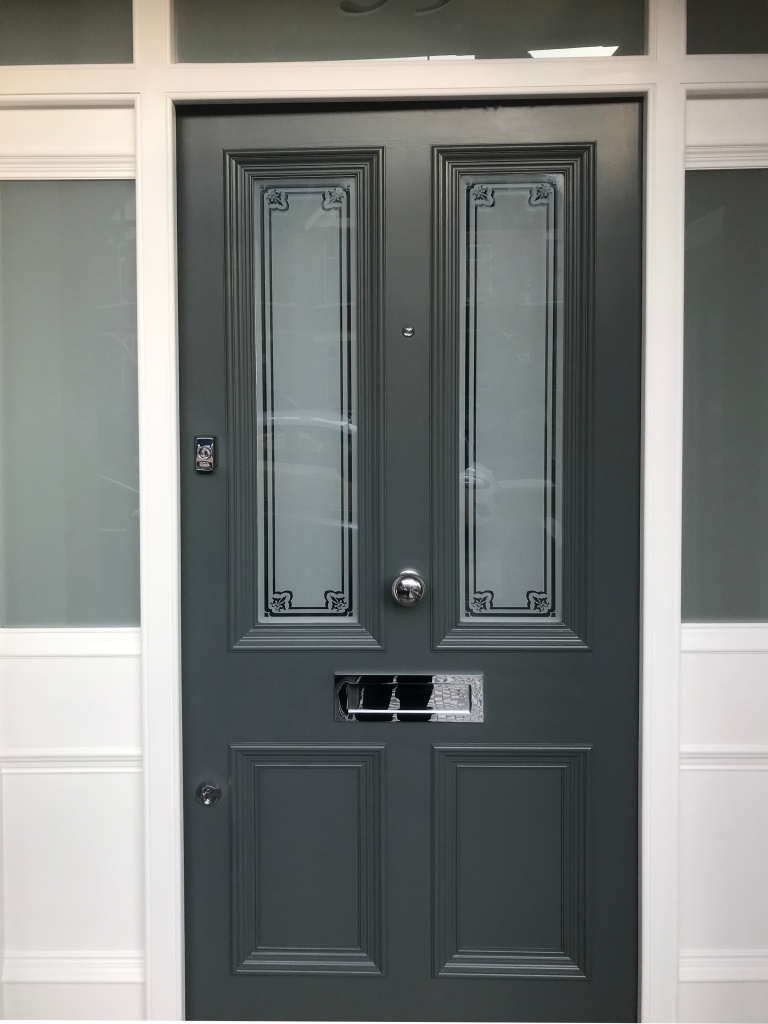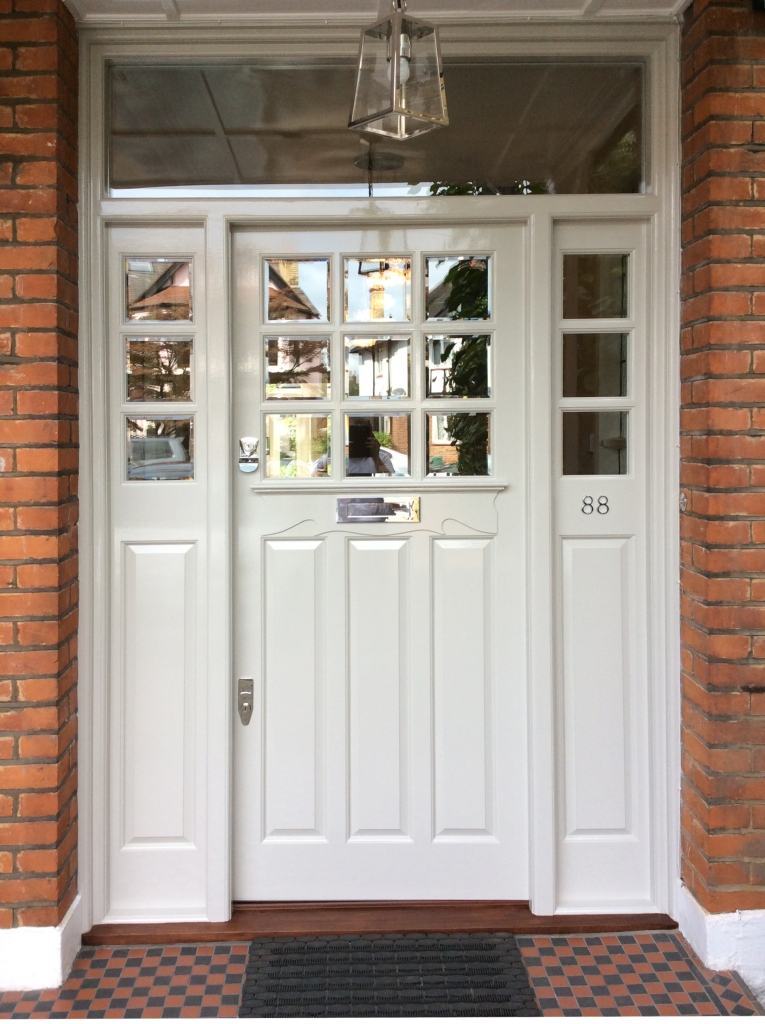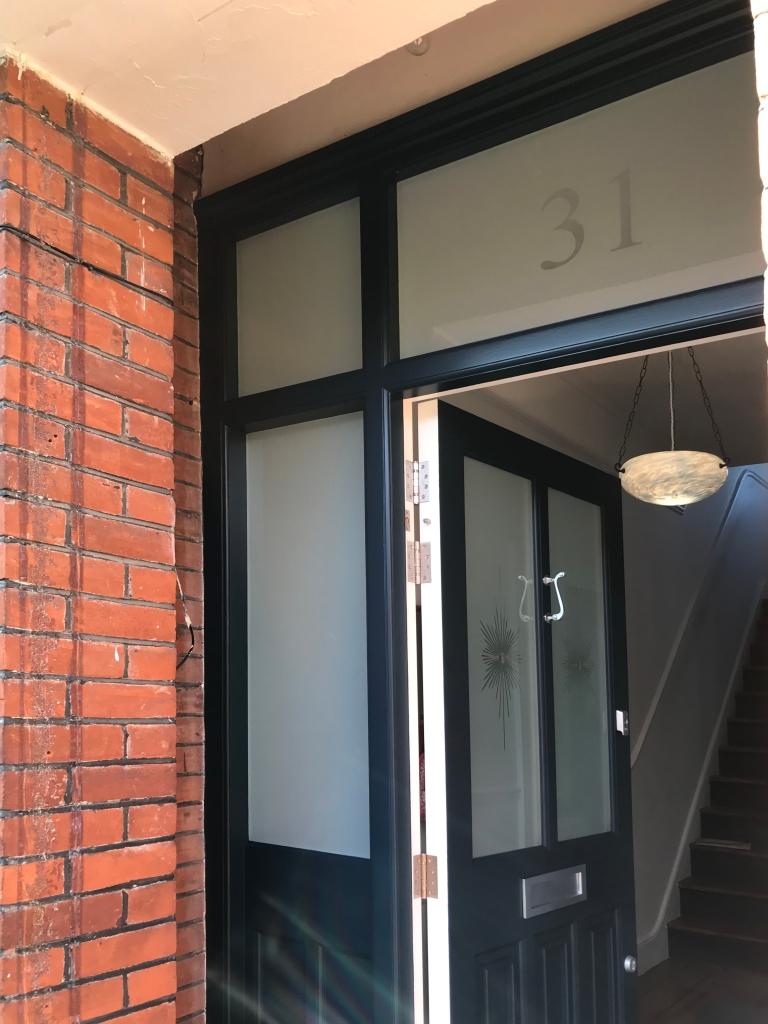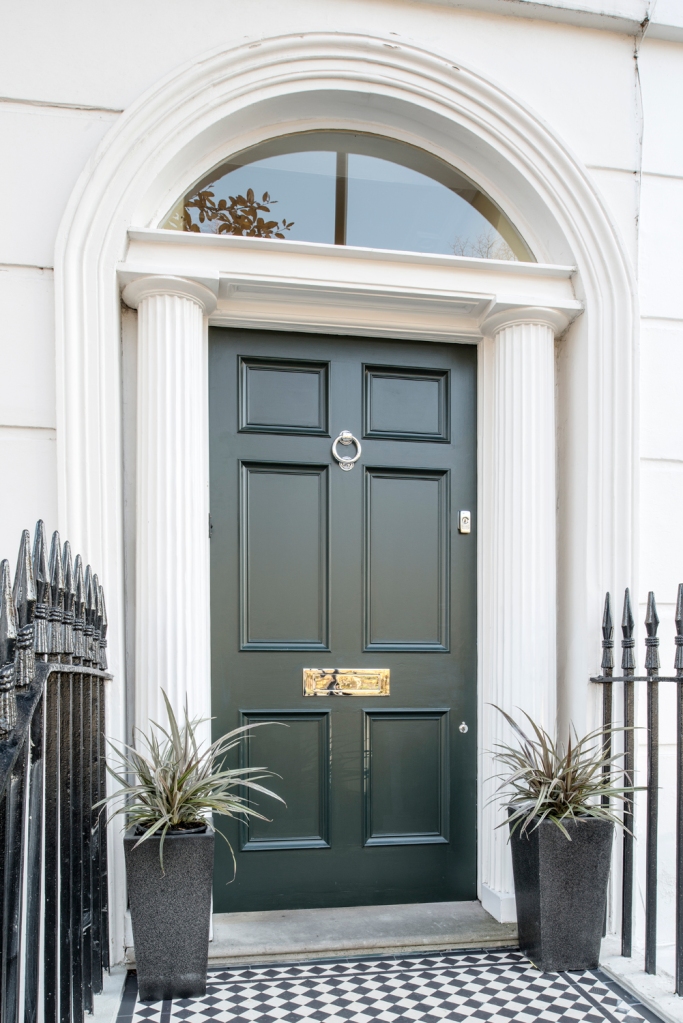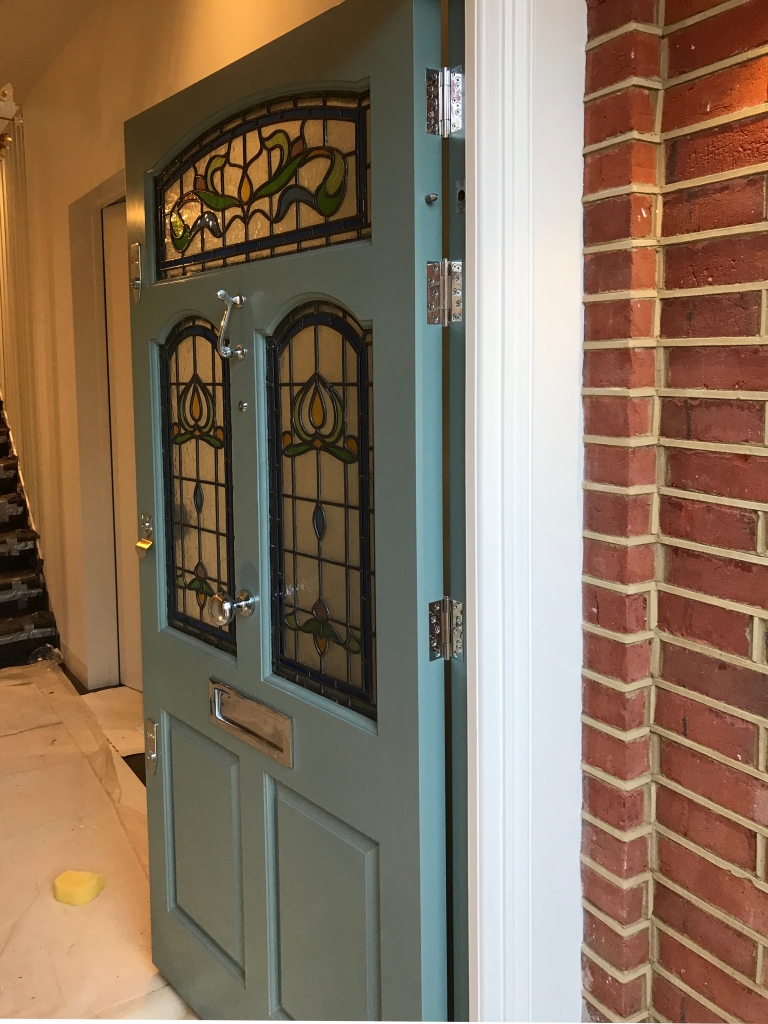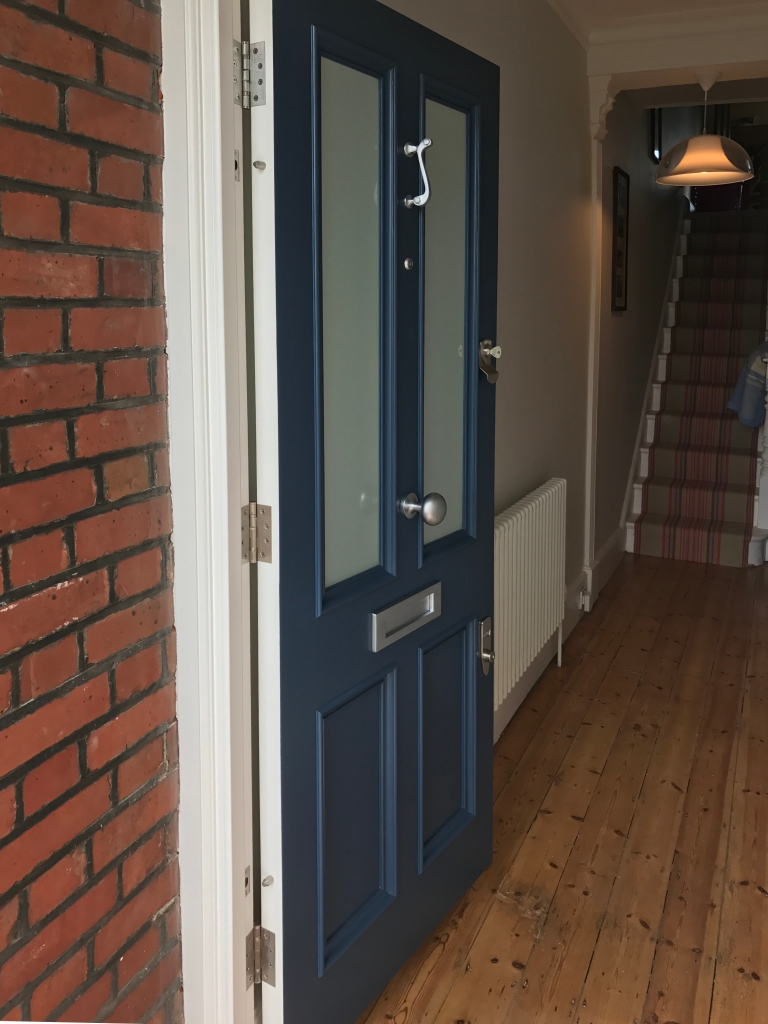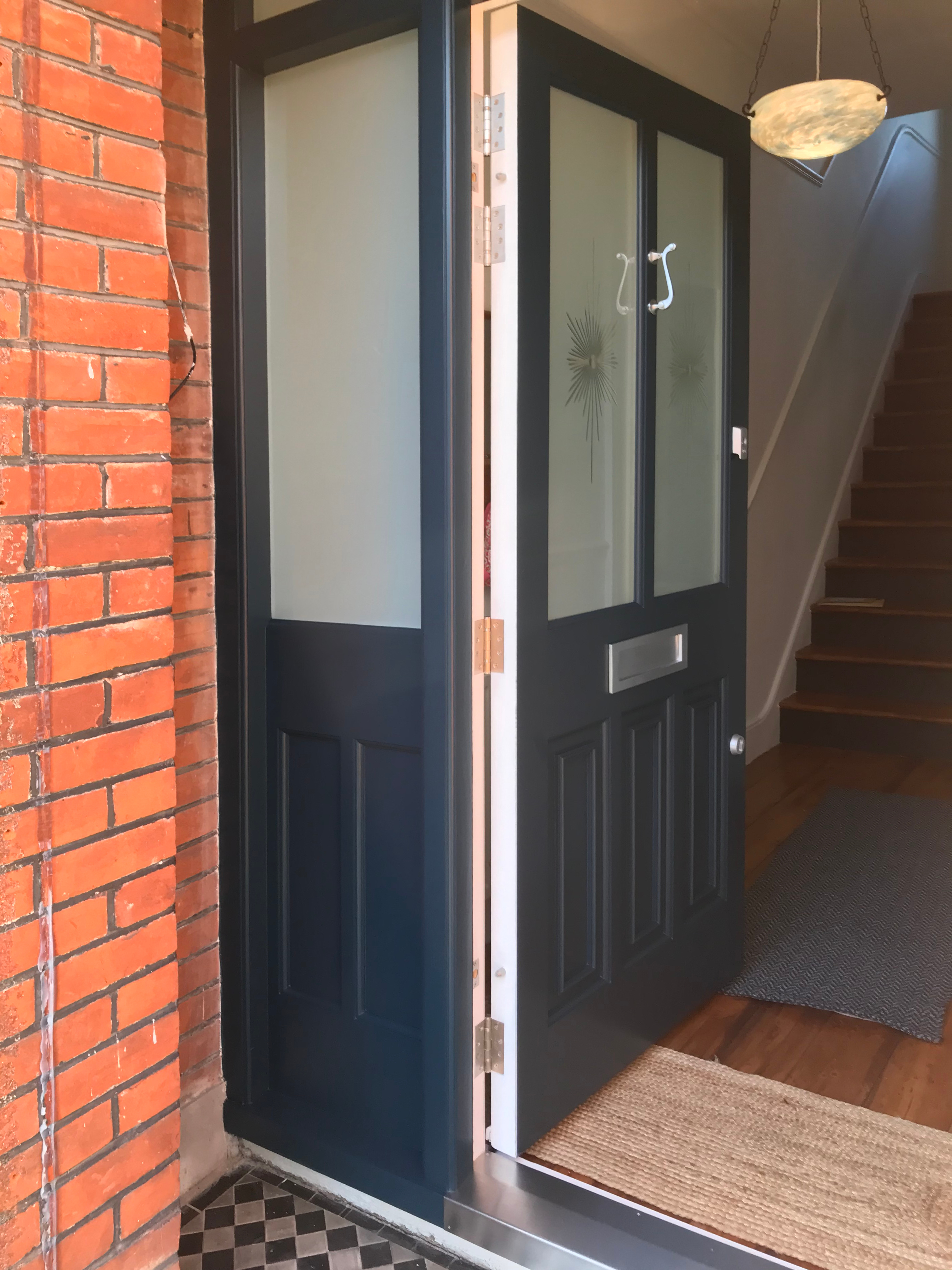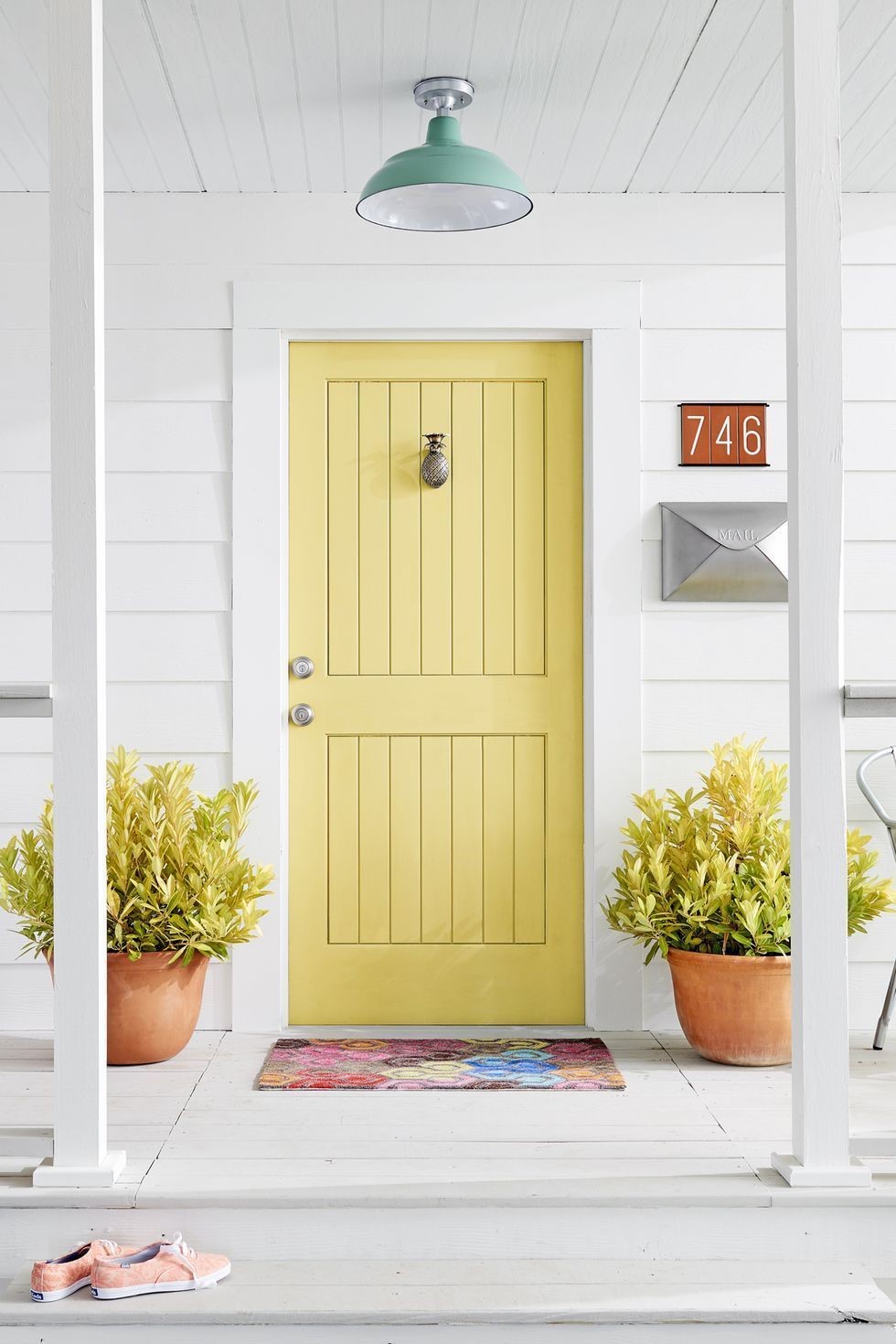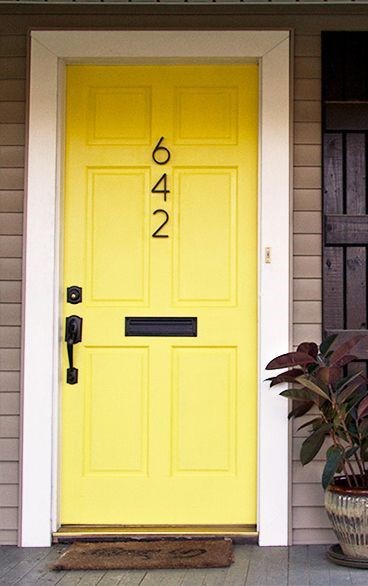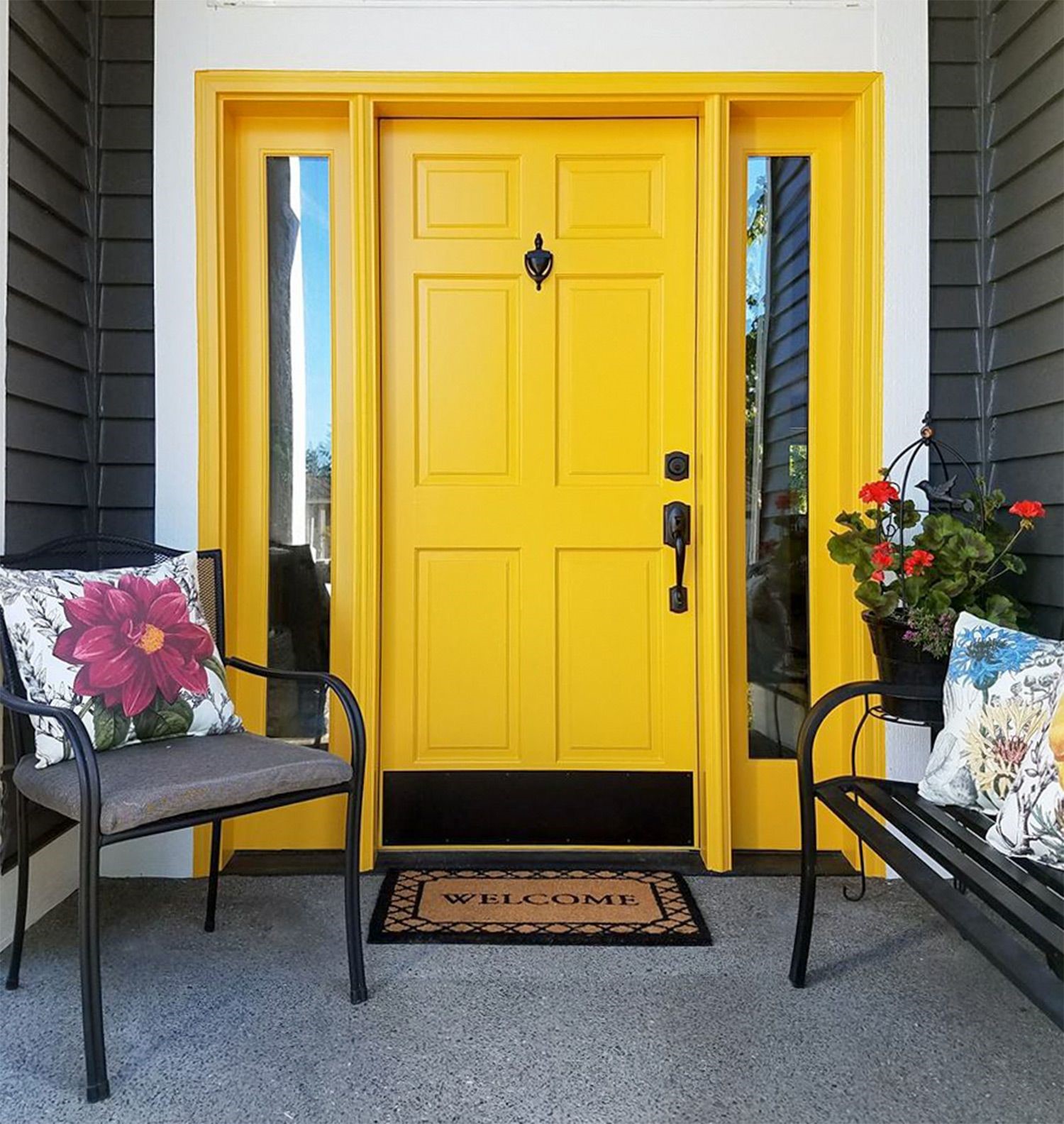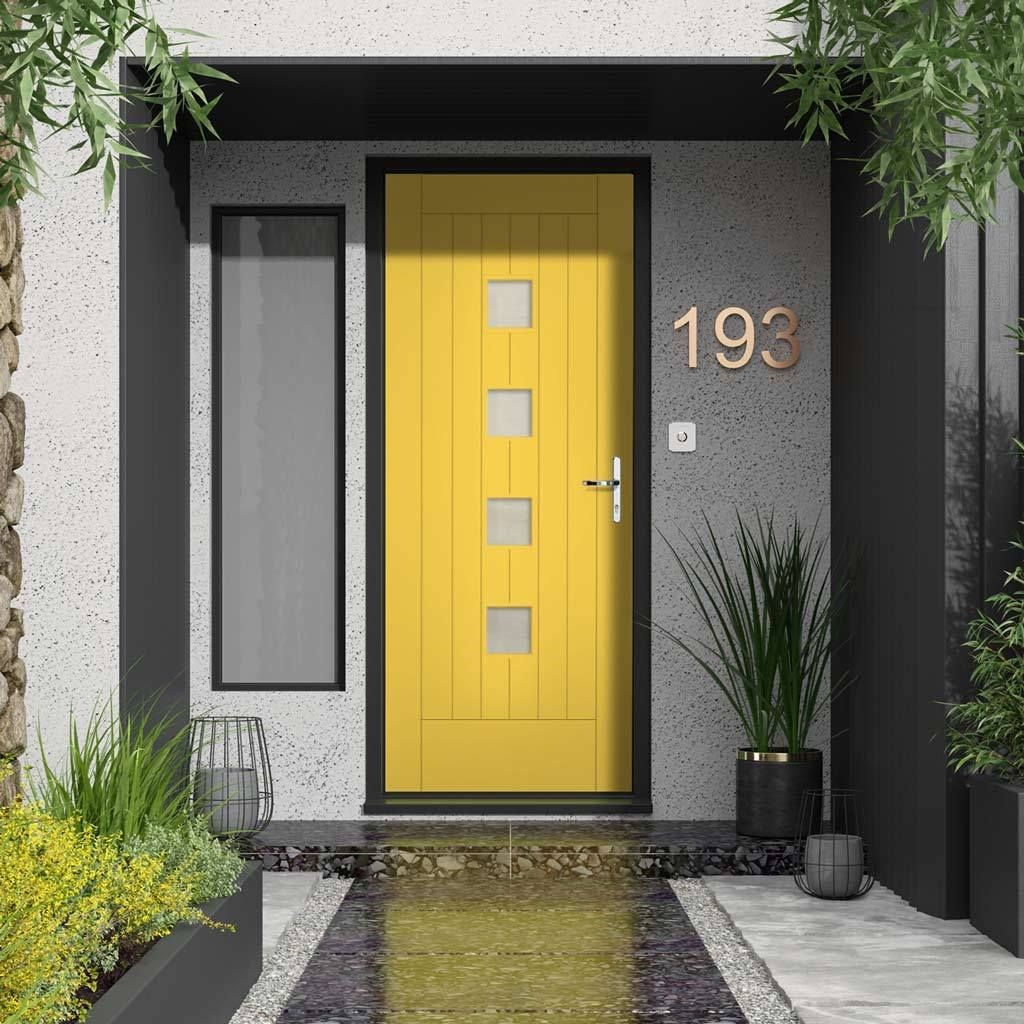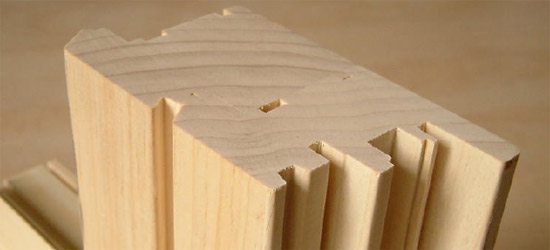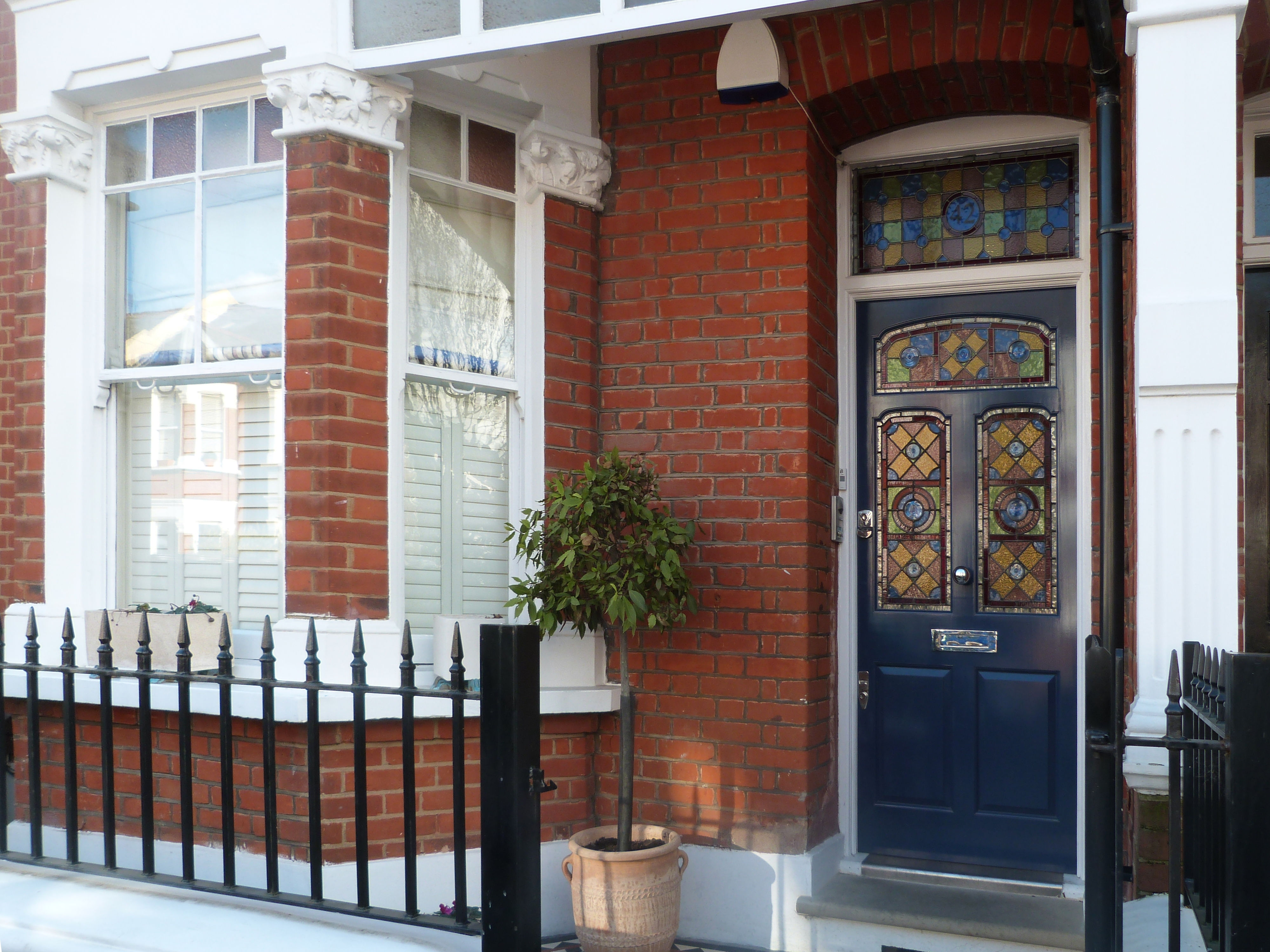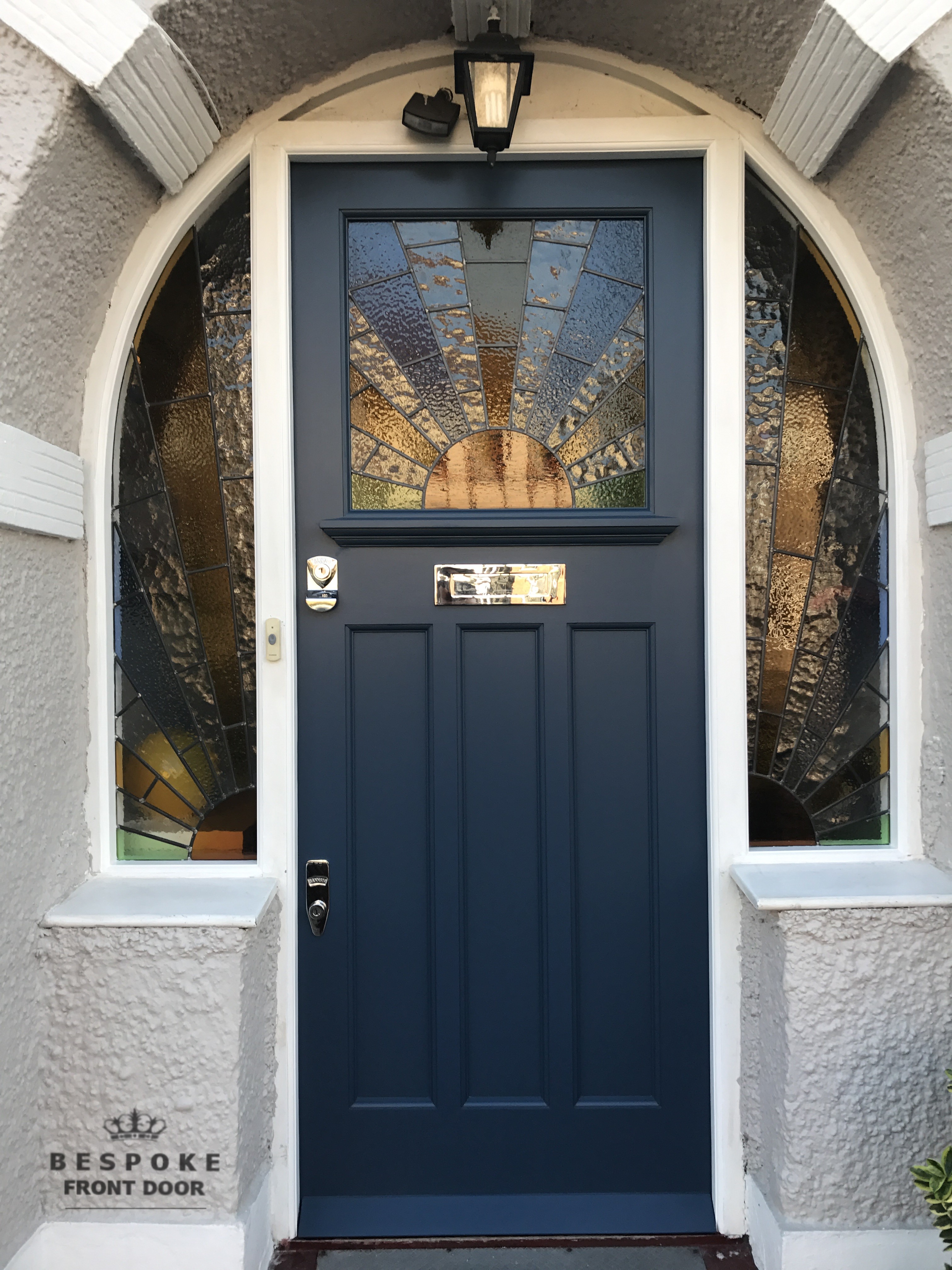In our last two articles, we looked at the top five best shades of both blue and red paint for your bespoke front door, so you could choose the perfect tone for your house to make it as aesthetically pleasing and welcoming as possible. But what if blue or red aren’t exactly the colours for you, regardless of what shade you use? Well, maybe yellow will suit your London front door and make your house look beautiful. In this blog, let’s take a look at our top five favourite shades of yellow that are just absolutely stunning for front doors, and we’ll give you a few ideas of when each shade is ideal for use. We hope this blog can help you pick the perfect paint colour for your front door so you can make your neighbours jealous!

- Yellowcake
The yellowcake shade of yellow is extremely bright and positive, and really suits your house on sunny days when there is a little shade but mostly bright light. It reflects light incredibly and adds a really upbeat and welcoming appearance to the outside of your house. Although it has an old timey feel and would suit a forties house, it still looks stunning today and you can absolutely get away with coating your bespoke front door in it!
- Classic Yellow
Just because it has classic in the name doesn’t mean you can definitely get away with this shade of yellow, but depending on the appearance and exterior of your house, it can compliment your architecture and design features very well. It’s quite a strong shade of yellow and in its purest form it’s likely to create a ghastly appearance if paired with some more dull colours – however, if your house has a lot of vibrant classic colours, then the classic yellow shade might just be perfect for it!
- Lemon
The lemon door shade of yellow is not so common, but it is really gorgeous and when paired with some attractive exterior house colours it can look very fabulous and add a welcoming, friendly feel to the outside of your house. It’s been used in a lot of Mediterranean style homes and can look pretty decent in the sunlight. You might want to be careful pairing it with some stronger colour tones, such as classic red, because depending on where your colours are distributed on the exterior of your house they can clash pretty badly. We recommend searching up some great examples of houses with lemon yellow front doors to see if your house’s design is suited for this shade.
- Pineapple
If you are going for a darker shade of orange, then pineapple might be a good choice for your bespoke front door. In fact, the pineapple shade of yellow actually looks fruity, so if you have a house with playful or positive looking architecture, then it might be a good paint choice for your front door. It is quite out there but it has been pulled off very well for so many different kinds of houses and depending on your architecture and the outside colours of your house, it can look really nice all year round.
- Canary
Canary is a brighter, less vibrant tone of yellow which can go really well with white colours and some simple house architecture. It doesn’t stand out too much or get in your face, but it’s pleasant, relaxed and very appealing!
